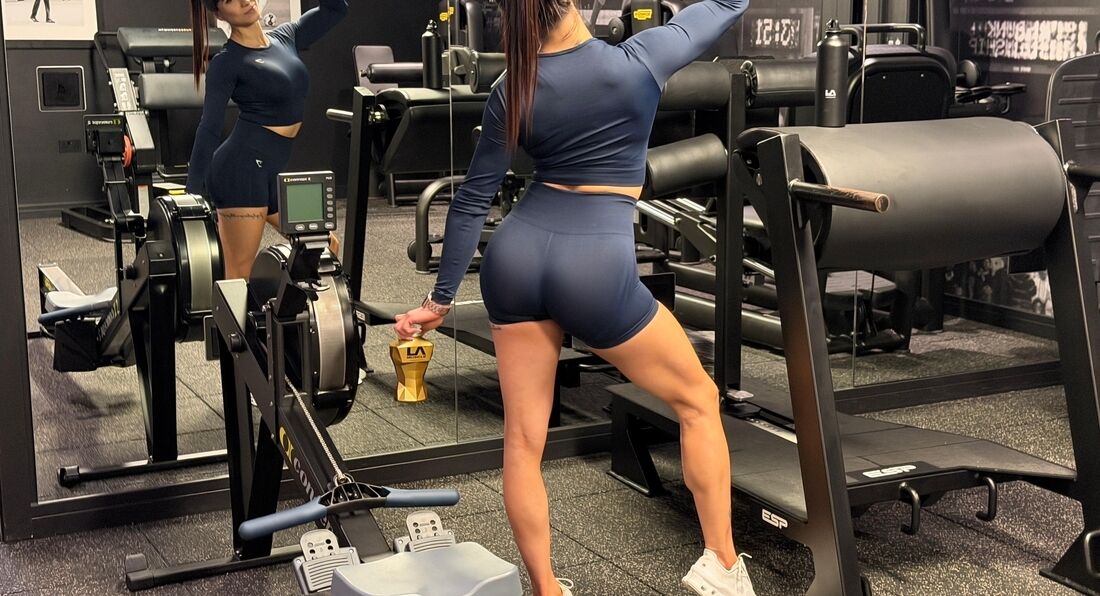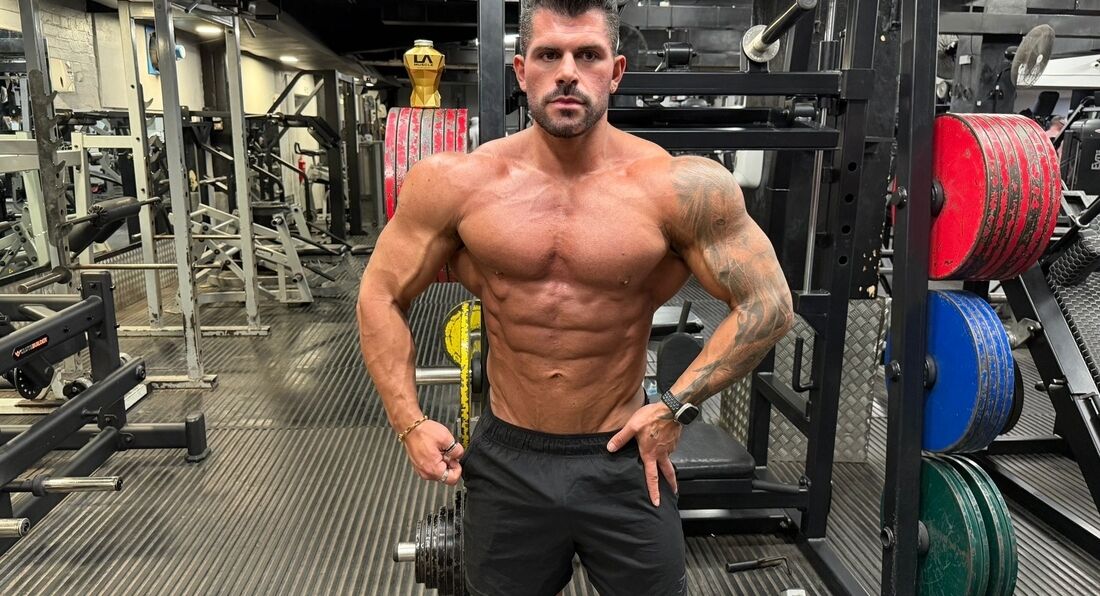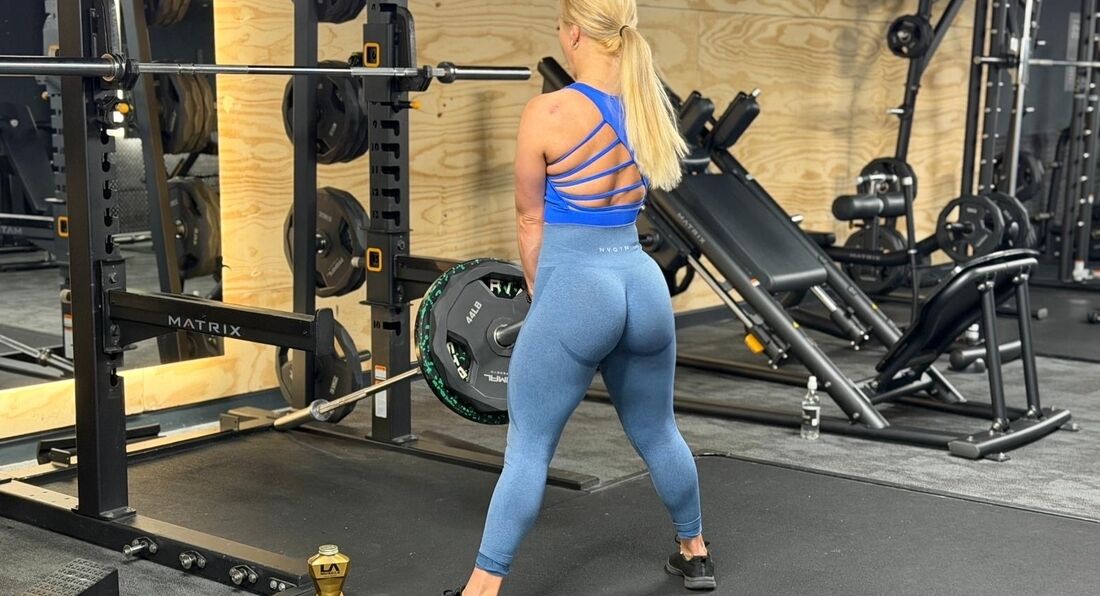The Knowledge > Better Health >
Thursday, 22nd November 2018
A Recipe For Success For The Committed Client
By Neil Anderson, WBFF Pro
By Neil Anderson on 22.11.2018 09:25 am

At 9 years old I decided I had to be the fastest kid in school, both my parents had been, so I decided to carry the baton for the next generation. I had started training every morning, waking the family to afford me an early lift to school. I hit the track and went about sprinting to simply familiarise myself with the track and the task ahead. The win my reward and a path set, it always has been a priority of mine, athleticism, a competitive spirit and the rewards of physical activity. An obsession with health, fitness and achieving a certain shape to have the confidence that goes with that followed. Within a few years that passion became a career. My own habits ebbed and flowed in terms of motivation and willpower to maintain the best nutritional protocols and training regime. I’ve found it’s rarely for anyone, full throttle all of the time! Injuries and different priorities in life, changing the landscape over time, I am after all human! So it takes time for anyone to achieve a balance of being happy with how you look and feel. Absolutely everyone has periods that are off our ideal and this is and will be part of the journey!
Life after-all is a process of seeking answers and identifying our own measures of success, and hopefully attaining a quality of life that is befitting. As we leave our teenage years, we take on an active social life, study, begin careers, travel, and families become all-important. So even the most competitive and physically motivated individuals face the challenges of balancing a healthy active lifestyle (that is not obsessive thus negating the overall healthy aspect!). A lifestyle that incorporates an enjoyable social life, family life and productive professional life. So how is it possible for the average individual to achieve this?
You’ll be glad perhaps to hear at this point that I train only a few hours a week, eat out plenty as I love food, and enjoy an occasional drink! I do love my time spent in the gym, or being physically active enjoying the outdoors, using it as an escape to remain motivated and full of energy. To achieve a nice balance may not be just as difficult as you imagine!
Finding your healthy balance, in the broadest sense, is achieving your personal lifestyle goal!
So in my book the most important thing for my clients is to help them identify what their own healthy balance looks like. That means considering all aspects of your lifestyle from work, rest and play. Selecting a way of reducing the overall energy consumed (diet that suits and is sustainable), whilst feeling energised and enjoying better sleep, exercising regularly and having a fulfilling social life. Wow, that’s a lot to take into consideration, feels intimidating! Believe me it doesn’t need to be, baby steps or massive leaps, all up to the individual but my aim is to make sure optimum lifestyle is achieved!
To find the healthy balance requires me to break this down into more manageable bite-sized portions, pun intended! The main jist is to view the process as a lifestyle change, and not simply a ‘diet’, ‘transformation’ or ‘new exercise regime’ as all suggest a finite period. This will only ever lead to disappointment in my experience with a yo-yo in and out of good habits!
Improve habits one at a time for a long-term lifestyle change!
Find a number of habits you can improve on weekly to get closer to your respective goal. For example, you make a Bolognese every week for your dinner on a Monday. You buy pre cut veg and add dry herbs and spices, and in the end add store bought sauce to the supermarket mince. Improvement- you make your own sauce from raw ingredients adding interesting fresh herbs and a variety of veg, blended tomatoes, all added to butcher quality mince. This all adds to the nutritional value, reduces the additives of processing, making it a more nutritious, potentially satisfying choice, likely reducing sodium and sugar and removing those undesirable chemicals. Friday night take out, instead you make a meal at home, you skip the bottle of wine on Wednesday night or you might start walking to work. Hitting the gym to go to a class if you feel unsure what to do training on your own. Or as a regular gym goer that is inconsistent perhaps, set out specific days to get that workout done as part of the new improved schedule!
A good number to start is about 3-5 significant choices, then 1- 2 a week from then on until you struggle to find things to improve. It wont be long before you reap the rewards and see the improvements in body constitution and energy. The key is maintaining the new habits once they are formed!
Find an approach to eating and quantity control that works with your lifestyle!
There are endless methods of regulating energy in our diet, energy in the broad sense being the key word here! Simple kcals in kcals out is in my opinion a little too simplistic. All fats, carbs and protein are not equal, processing and other nutritional qualities are all important, whether you have plenty micro nutrients (minerals and vitamins) within the choices., equally very important.
Take into account how you feel, perform and sleep. Remember also that unfortunately over 2 years 95% of diets fail. If you simply eat less of the foods you always eat, the foods that have been a factor in you being in a less than ideal state. It is very possible that it is an excess of foods that cause a propensity to over consume, either psychological triggers of comfort, or neurological adaptations. On account of food choices- energy regulation can be damaged over time, with the modern environment of readily available (heavily) processed foods in ever increasing quantities. Therefore finding foods that satisfy, are nutritious and afford a consistent energy and satiety is the key to sustainability!
Little and often is surely best?
If you work in a fast paced environment that you have a 15 minute coffee break and a lunch each day if lucky, there is no point trying to eat 8 meals a day. Recently there has been a lot of discussion debunking the theory of eating little and often anyway. Eating little and often for people that struggle with portion control is not likely to be the best solution, simply put it offers more opportunity to eat and consequently over-eat! If you struggle to reduce volumes It is not a good starting point! A good idea is to identify psychological drivers, over the physiological need for food. I believe this is key to changing habits. So longer fasted periods allow you to adjust to the absence of food with many finding they reduce cravings in a short period. During fasted periods the body utilises fat more efficiently than after meal times, the interaction of glucagon and fat is the favoured energy pathway, versus the hormone/glucose response to food and the energy pathway post consumption.
More practical and straight forward in my book is having three main meals. I like to centre my habits in view of circadian rhythm, the notion of using energy more effectively earlier in the day. So I eat a very large breakfast, large lunch and a more modest evening meal. Others might prefer three modest meals and a healthy snack.
Intermittent fasting as an option:
Current trends and gaining momentum for convenience are forms of intermittent fasting. This may equally be ideal to coincide with work, allowing the individual to enjoy food at times of the day when there is less stress and time constraints.
A popular method of intermittent fasting is to eat over 8 hours a day, with a 16 hour fasted period. I like that this has a regular daily pattern and for most the best times to eat are whilst in the house, when there is time to make a nice home cooked option. So perhaps skip breakfast and fast from the previous dinner, 16 hours later a late breakfast or lunch. You may have time for 3 meals or more. Equally some may prefer to fast later in the day, which may in fact be marginally better in terms of hormone response to food being more positive earlier in the day for the same meals. However I tend to not overthink this and try to best work within an approach that you can stick to and feel most satisfied. Aim to eat lots of vegetables and lean protein sources so there is plenty volume to your meals. Healthy fats from avocados and olive oils as dressings for example which alongside raw apple cider vinegar and some pink salt and pepper makes for a great and very simple accompaniment to a salad.
The 5:2 approach sees two very low calorie days a week, usually 500-600 Kcals which might be 1 meal for example or some very light snacks through the day. The concept looks at an overall calorie deficit when you view the week as a whole. A more extreme version of this is the every other day fasted to about 600 kcals, with the same accumulative effect on energy.
Some like a purge, which lends itself to the Eat-Stop-Eat approach, which a complete fast with fluids only is done for 24 hours on one or two days a week. Others simply try to skip meals when they feel they aren’t particularly hungry, instead of eating to habit, which is a lot less organised, however can work well for some with varied schedules or workloads.
Finally the Warrior diet affords a large meal at the end of each day after a long fast from the previous evening meal. The main thing is however regardless of how you time your meals, ensure the content is healthy and satisfying. Eat more veg ideally seasonal, giving plenty fibre, quality sources of meat, fish and poultry, good quality whole grains and variety of carbohydrates- potatoes and sweet potatoes my go to. If vegetarian beans and pulses for protein and similarly a good colourful plate with enough volume to satisfy!
Afford yourself a reward for determined efforts!
Maybe including rewards- so you are a chocoholic, every day you have a chocolate bar, that bar that perhaps means the difference of maintaining weight vs slowly and steadily losing weight, because it can literally be that small a deficit/surplus that is the difference. You take it out and have a Saturday night with a lighter dinner so you can have your chocolate treat, better still guilt free and earned. Believe me it will taste better. If you are someone that finds they break even once a week and the floodgates open and all self-control is lost, then this approach is not for you. Find an alternative, for example a snack like a proper creek yogurt with some shaved dark chocolate and berries to sweeten. Delivering the hit of chocolate in a sustaining snack that can be part of a days healthy eating, and a treat nonetheless!
Do the physical activities you enjoy!
Trying to get involved in activities you really enjoy, as not everyone takes pleasure from the gym. I don’t doubt having seen in so many cases, this can change over time. However if you really don’t think you can ever take any real enjoyment from this, well its time to find a pursuit you do. How about a racket sport, the competitive challenge giving a new dimension of excitement, water sports, hiking, cycling or hill walking to take in the fresh air and being active. It has been proven that any activity improves the hormone sensitivity of the body, which is the main reason why we exercise (to address energy balance)!
Involving friends or even family in the process!
An even better way to improve the overall satisfaction achieved through exercise is make it a social even too. Playing a small, organised team game, like 5 a side football, tag rugby or tennis for example, each offer a great opportunity to chat, exercise and consequently relieve stress. The fact that there is some accountability to sticking with a scheduled event is another motivating factor!
Set realistic goals and timeline!
If you have in mind a goal of looking like and athlete, six pack and chiseled physique. It is entirely possible for just about everyone. However you will need to train like an athlete to get there. So strength training 4-5 times a week, quality rest and nutrition for recovery. Now its not that tall an order, but may be more all out effort, with too strict a regime of food for some. However simply for good health and body constitution about 4-5 hours of activity a week is still a good goal to have. The intensity and consistency will determine the result. I have many clients that want to achieve a very athletic look and balance that with work and family. The constraints will be how much you are willing to change your lifestyle and where you set your goal!
The gym environment is ideal for changing our shape/adapting our bodies due to level of equipment and amount of weight that can test the body to its limits. For example, the body adapts to resistance based training by developing thicker muscle (more volume of lean tissue) that becomes more capable of load bearing. This has the impact of increasing our basal metabolic rate, which is relative to the amount of lean tissue on the body, and is illustrated in our physical appearance.
Similarly in terms of consistent cardio the body becomes more capable by becoming energy efficient. Over time there is the potential that excessive moderate intensity work may hinder the development of lean tissue for strength and speed purposes, so the balance has to be achieved depending on specific goals. However for most non-specific athletic performance working to move fast and improve strength will improve the body shape with the least time spent and most effectively. More In essence a combination, however knowing that any exercise really has been proven to help body constitution!
So, “how long will it take for me to lose fat?’ This is a typical question I hear and an incredibly difficult one to answer. You can start to see physical changes with a new routine from the first week. And also significant weight loss, now the reality is gastric emptying, less retained water and a glow from exercise will have you look and feel better from this early point. It is possible to lose anywhere up to about 7 lbs in the first week potentially due to the aforementioned reasons and reduced glycogen retained from deficit. However expect more like 1-2 lbs a week after this point as a realistic amount. It may not sound like much but with consistency, this stacks up quicker than you imagine. If there is more weight to lose, then indeed this can be quicker!
For those with a goal of more than simple weight loss, but that athletic shape that ask “how long before I see significant changes?” Avoiding the heavy science of protein synthesis at the muscle, in simple terms right from the moment you engage in exercise the process starts and is accelerated in the few hours post training. Now it is still a very slow and accumulative process that will take weeks or months to see significant tissue development.
That being said a newbie to exercise will experience the fastest and most significant changes. Or if it is a returning athlete that has spent a year or two in a much less active state, it will return reasonably quickly. Age will also factor as we tend to lose muscle as we age and another great reason to hit the gym to maintain a good level of lean tissue, sustaining or metabolic rate! Women will put on a lot less muscle than males, which is very much favoured in most cases. Also why females shouldn’t panic about getting ‘bulky’ from lifting weights, the threshold for muscle is capped by the female hormone profile.
A regime with compound movements, ie those that work through more than one joint in the body are best. For example a squat moves weight that is on the shoulders and thus supported by all the structures below, moving through the hips, knees and ankle joints. You will be able to lift more than if for example you lifted weight in a leg extension, which is simply straightening the leg in a seated position (an isolation exercise). The heavier load puts more stress on the muscles, which over time creates the largest improvement in muscle tissue. The central nervous system is stimulated more and neuromuscular connectivity improving athletic performance and metabolic function in the process. Equally add in push and pull exercises for upper body as the main structure of the routine. Ensure rest on body parts before repeating overload on that area of the body, up to 72 hours is optimal.
Best not to get too caught up with the time it takes, enjoy the process, remember each day is closer to the goal when the habits remain mostly good! That’s not to say skip all the things we enjoy, moderation and pleasure without the guilt is the key!
You can find more about Neil on his athlete profile by clicking here






























